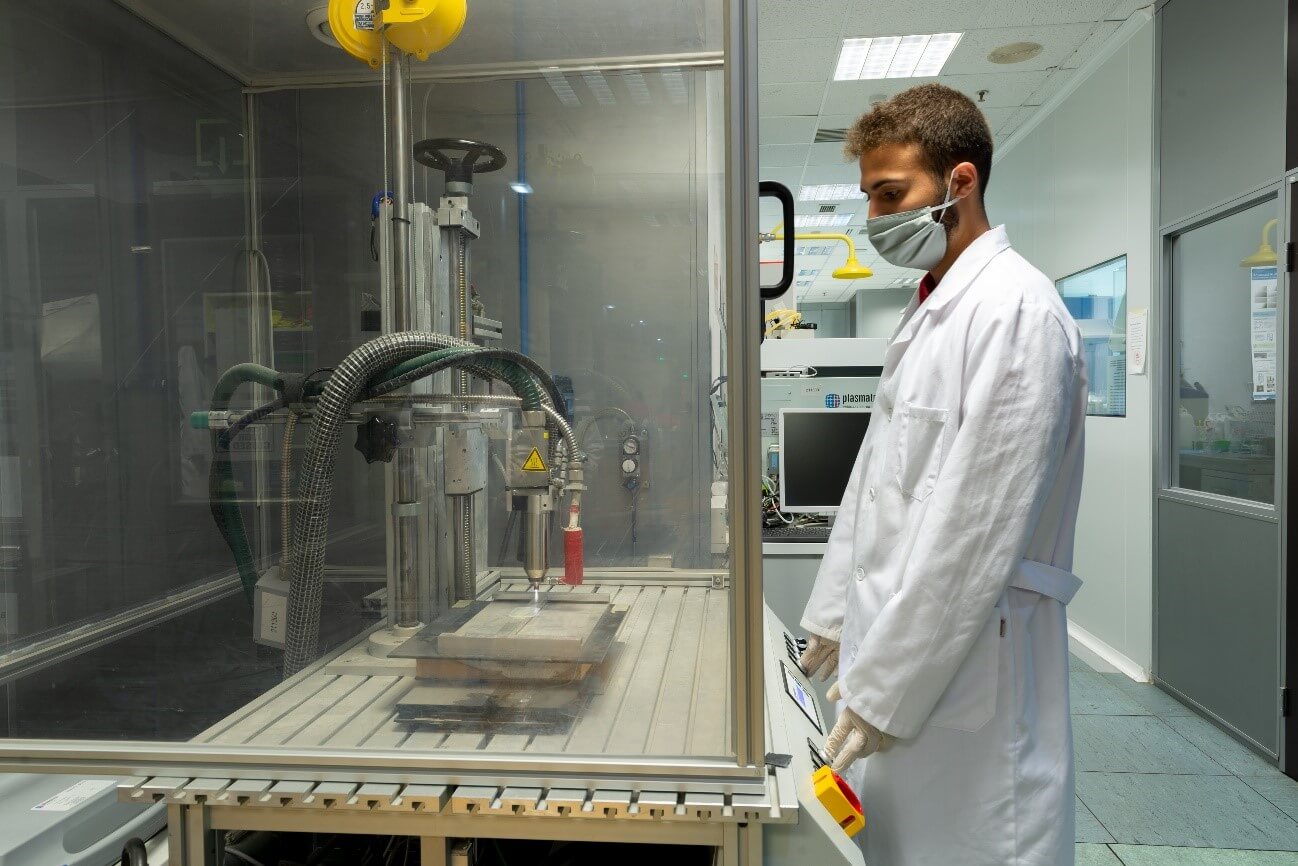Atmospheric plasma is one of the most efficient processes for material innovation, cleaning, activation or coating of plastics, metals, glass or recycled materials. Distinguished from other types of plasma (low pressure, high pressure and corona method) by its advantages and applications, it is worth dedicating an article to explain what it is, how it is used, as well as its benefits and difficulties.
Plasma is known as the fourth state of matter; and this is because if enough energy is provided to a gas, its electrons can be stripped off, giving rise to a cloud of ions, radicals and many other species. Alberto Zurro, Engineer Specialist in Energy Technologies at Infinitia explains how “atmospheric plasma can be used in almost any sector – to name a few: aeronautics, electronics, textiles, packaging and automotive – and is used to apply a coating, change the chemistry of surfaces and clean or activate them. A clear example is the bonding of plastics, which would otherwise not be possible or would require a special product.
Now, although it is true that new domestic applications are emerging in the field of hygiene in which Infinitia has also worked, it is not common to handle it outside the industrial level. In this sense the services provided by the company are directed, where our team manages to integrate and optimize this technology in your company, offering the knowledge and customization necessary for each case.
For example, if we think of packaging for food use, characteristic of fast food chains, it is common for air to enter the package and oxidize the food, accelerating its shelf life. As a solution to avoid this, it was proposed to modify the plastic used through the application of atmospheric pressure plasma jet (APPJ) technology, or atmospheric plasma, after an analysis of the materials used; in such a way that a coating was made on the films to extend the shelf life, increasing it by several months.
As Javier Sanz, CEO of Infinitia, explains, “compared to other plasmas, the main advantage of atmospheric plasma is that the equipment used is much simpler for other types, the plasma requires a vacuum process in reactors, increasing the duration of the process and forcing to work in batches”. In addition, “by using plasma at room temperature and atmospheric pressure, i.e. without any vacuum, continuous handling is possible, and it can be automated with robots or mechanized arms and can be integrated into new or existing lines,” Javier points out.
As a result of the speed of the process, he continues, “costs are reduced, both in terms of energy consumption and final price, since, by increasing the supply of units, they become more accessible products. Consequently, by reducing or avoiding the use of chemical products, plasma is a green technology.
However, despite all its benefits for commercial equipment, its biggest obstacle is knowing the application conditions required for each specific case. Plasma chemistry is complex and often requires application-specific optimization and development.
In short, atmospheric plasma systems are suitable for a wide range of applications, including cleaning, disinfection, or changing the chemical composition of a surface.





